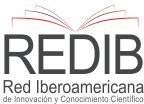The inclusion of Bioethics as a Transverse Axis in the EBR
Abstract
The Peruvian society, faced situations in which people express humiliation for life without any remorse; It is possible to discover the vast majority of times, the authors of these harmful acts come from dysfunctional homes, an atmosphere of family violence, and even many of them did not finish the basic regular education, we are referring to the process that requires commitment and delivery, not only on the part of teachers, but also of parents or guardians, who will reinforce at home what you teach your children or wards in educational institutions. The important role played by education, it is not only in the aspect of scientific and technological discoveries and advances, but human quality of people, to its ethical principles, ethical and moral values that are learned during the school. The scope of bioethics has amplified, today, includes not only the medical ethics, environmental ethics, debates about the rights of future generations, sustainable development, etc. To include the transverse axis of the bioethics education, they will have to take into account the part that makes up the essence of bioethics, its principles and the humanisation of education.
Downloads
References
Argueta, M. (2004). Ejes Transversales en el Currículo de la Formación Inicial de Docentes. COORDINACIÓN EDUCATIVA Y CULTURAL CENTROAMERICANA. Disponible en http://unpan1.un.org/intradoc/groups/public/documents/icap/unpan039733.pdf
Bandrés, M. Perú, Bioética y Medicina, su Enseñanza: Apuntes de una Realidad. Disponible en http://sisbib.unmsm.edu.pe/bvrevistas/spmi/v15n3/bioetica_peru.htm
Botero, C. (2006). Los ejes transversales como instrumento pedagógico para la formación en valores. Politécnica 3era edición. Disponible en: http://132.248.9.34/hevila/Revistapolitecnica/2006/no3/5.pdf
Concepto y Principios de la Bioética. Comité Institucional de Bioética. Disponible en: http://www2.congreso.gob.pe/sicr/cendocbib/con4_uibd.nsf/59F0B1DFF4B09FFB05257D18006D362B/$FILE/ceboax-0105.pdf
Campos, P. (2019). Bioética General. Tesis para optar el grado de Maestro en Bioética y Biojurídica. Universidad Católica Santo Toribio de Mogrovejo.
De Los Ríos, F. (2003). Bioética y educación: educación para la bioética. Biblioteca Virtual Universal. Disponible en: http://www.juntadeandalucia.es/educacion/vscripts/wginer/w/rec/3218.pdf
Espejo, A. (2004). Introducción a la Bioética en Sistema Educativo Español Córdoba. Disponible en: http://www.varona.rimed.cu/revista_varona/index.php?option=com_content&task=view&id=223&Itemid=33&limitstart=2
Londoño, S. y otros. (2002). Manual de iniciación pedagógica al pensamiento complejo. Ediciones Jurídicas Colombia p.158
Padovani, A. (2010). ¿Qué es la Bioética? Revista de Ciencias Médicas de Pinar del Río. Disponible en: http://scielo.sld.cu/scielo.php?script=sci_arttext&pid=S1561-31942010000100036
Unesco Organización de la Naciones Unidas para la Educación, la Ciencia y la Cultura. Declaración Universal sobre Bioética y Derechos Humanos. División de ética de las ciencias y de las tecnologías. Sector de ciencias humanas y sociales. 1, rue Miollis – 75732 Paris Cedex 15 – Francia. 2006
Zuleta, G. (2017). Bioética y educación: educación para la bioética. Magisterio. Disponible en https://www.magisterio.com.co/articulo/bioetica-y-educacion-educacion-para-la-bioetica
The authors retain copyright.
This work is under international license Creative Commons Attribution 4.0.
The articles published by the scientific journal "Notes on Bioethics" of the Universidad Catolica Santo Toribio de Mogrovejo, Chiclayo Peru, can be shared through the international public license Creative Commons Attribution CC BY 4.0
























 LIBRARY USAT
LIBRARY USAT